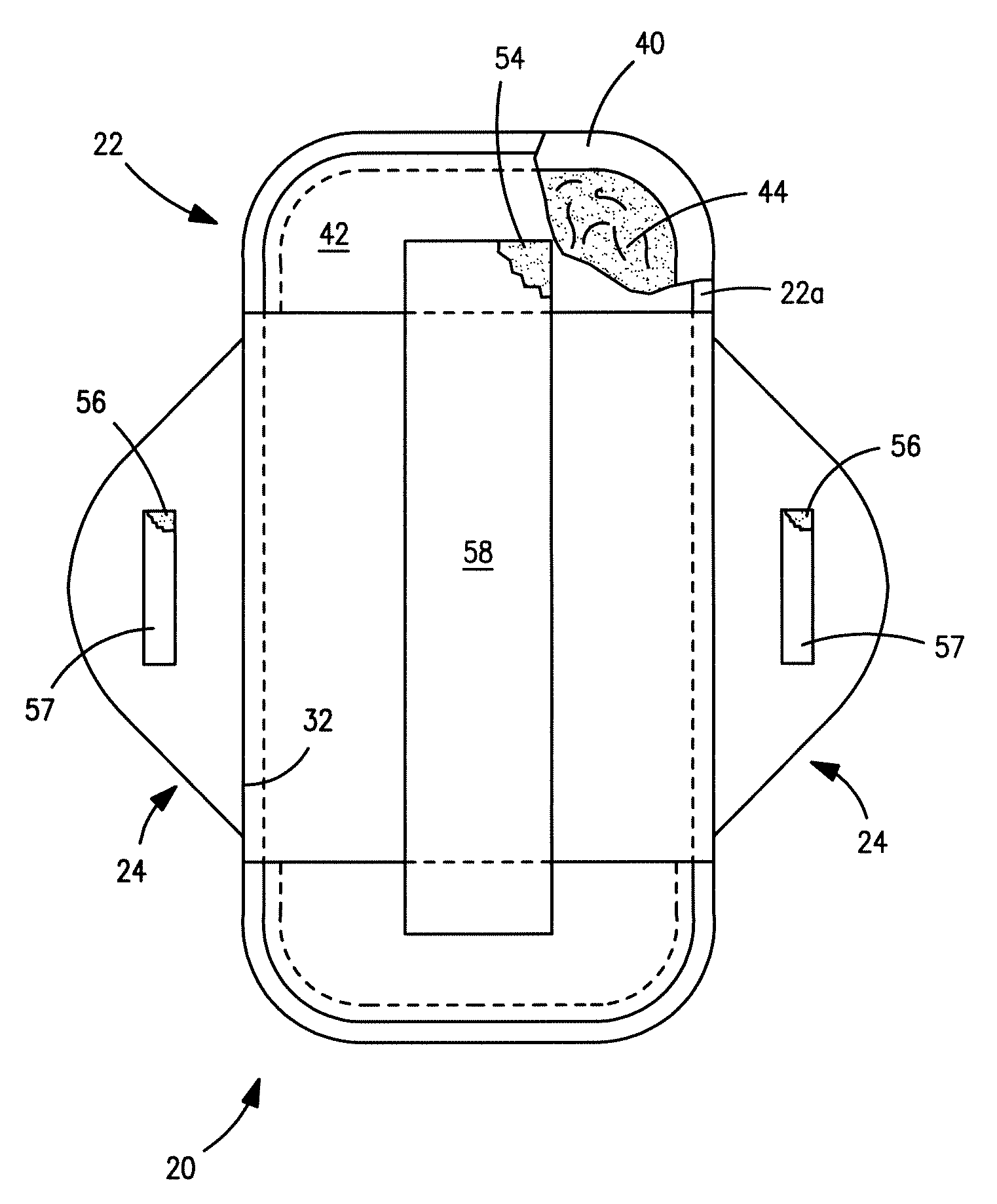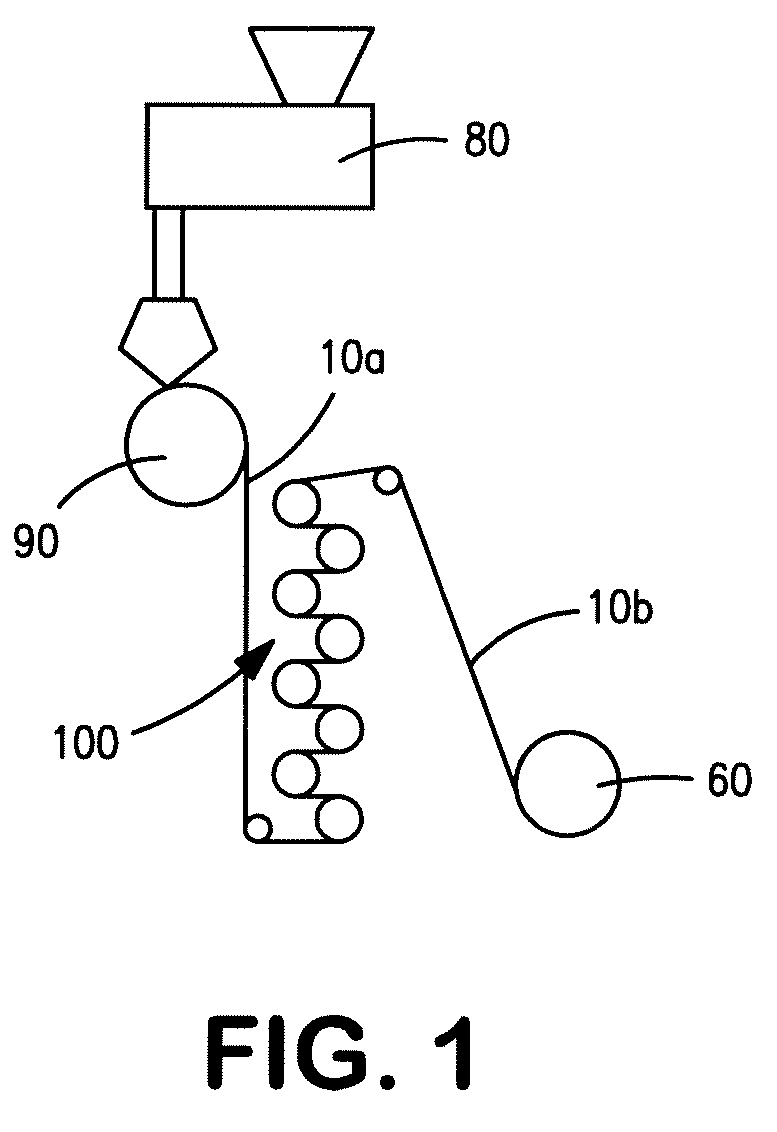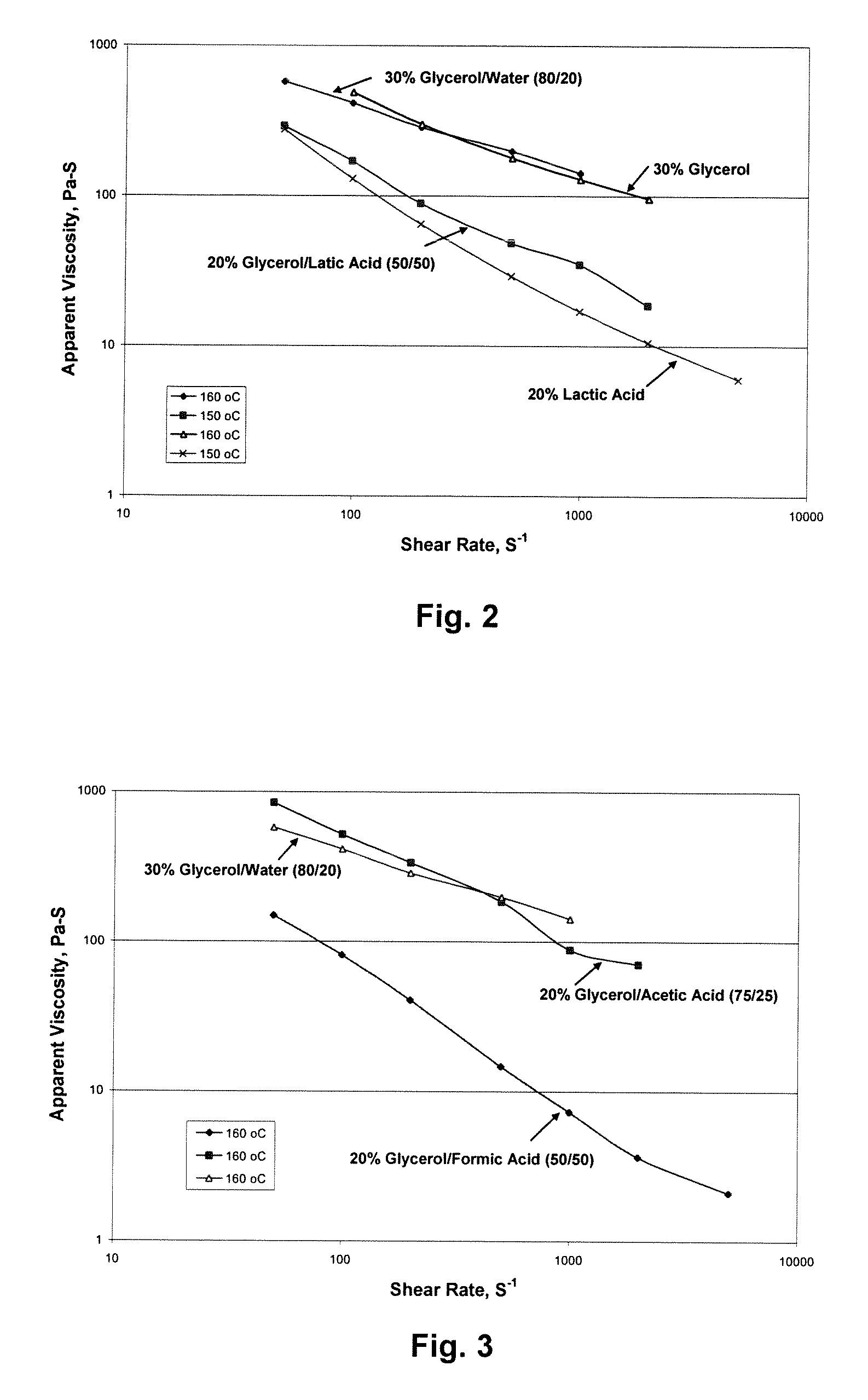Thermoplastic Starch for Use in Melt-Extruded Substrates
a technology of thermoplastic starch and substrate, which is applied in the direction of synthetic resin layered products, textiles and paper, etc., can solve the problems of lack of mechanical strength, ductility and toughness, and conventional thermoplastic starch
- Summary
- Abstract
- Description
- Claims
- Application Information
AI Technical Summary
Problems solved by technology
Method used
Image
Examples
example 1
[0077]A thermoplastic starch containing a native starch and a plasticizer was formed as follows. Initially, 2% Excel P-40S (mono-di-glyceride, Kao Corp. of Japan) was dry mixed with native corn starch (Cargill, Inc., Minneapolis, Minn.) in a kitchen mixer and then added to a K-Tron gravimetric feeder (Model KCL-QX4, K-Tron North America, Pitman, N.Y.) that fed the material into a Thermo Prism™ USALAB 16 twin screw extruder (Thermo Electron Corp., Stone, England). The extruder had 11 zones, numbered consecutively 0-10 from the feed hopper to the die. The temperature profile of zones 1 to 10 of the extruder was 70° C., 80° C., 100° C., 140° C., 140° C., 140° C., 120° C., 100° C., 80° C., and 60° C., respectively. The screw speed was set at 170 rpm to achieve a torque of between 60-75% during the processing. The starch feeding rate was fixed at 15 grams per minute at 20 rpm with an agitator. The starch was fed to the feed throat of the extruder (un-heated, before zone 1 of the extruder...
example 2
[0078]A thermoplastic starch containing a native starch and a plasticizer was formed as described in Example 1, except that a mixture of 80 wt. % glycerol (98% purity, Cognis Corp.) and 20 wt. % water was used as the plasticizer.
example 3
[0079]A thermoplastic starch was formed from a native starch, plasticizer, and weak organic acid as follows. Initially, 2% Excel P-40S was dry mixed with native corn starch (Cargill, Inc., Minneapolis, Minn.) in a kitchen mixer and then added to a K-Tron gravimetric feeder (Model KCL-QX4, K-Tron) that fed the material into a Thermo Prism™ USALAB 16 twin screw extruder. The temperature profile of zones 1 to 10 of the extruder was 70° C., 80° C., 100° C., 140° C., 140° C., 140° C., 120° C., 100° C., 80° C., and 60° C., respectively. The screw speed was set at 170 rpm to achieve a torque of between 60-75% during the processing. The starch feeding rate was fixed at 15 grams per minute at 20 rpm with an agitator. The starch was fed to the feed throat of the extruder (un-heated, before zone 1 of the extruder). A mixture of 50 wt. % glycerol and 50 wt. % lactic acid (85% in water, Sigma-Aldrich, St. Louis, Mo.) was injected into zone 1 of the extruder using a plasticizer gear pump (Bodine ...
PUM
| Property | Measurement | Unit |
|---|---|---|
| Temperature | aaaaa | aaaaa |
| Temperature | aaaaa | aaaaa |
| Temperature | aaaaa | aaaaa |
Abstract
Description
Claims
Application Information
 Login to View More
Login to View More - R&D
- Intellectual Property
- Life Sciences
- Materials
- Tech Scout
- Unparalleled Data Quality
- Higher Quality Content
- 60% Fewer Hallucinations
Browse by: Latest US Patents, China's latest patents, Technical Efficacy Thesaurus, Application Domain, Technology Topic, Popular Technical Reports.
© 2025 PatSnap. All rights reserved.Legal|Privacy policy|Modern Slavery Act Transparency Statement|Sitemap|About US| Contact US: help@patsnap.com



